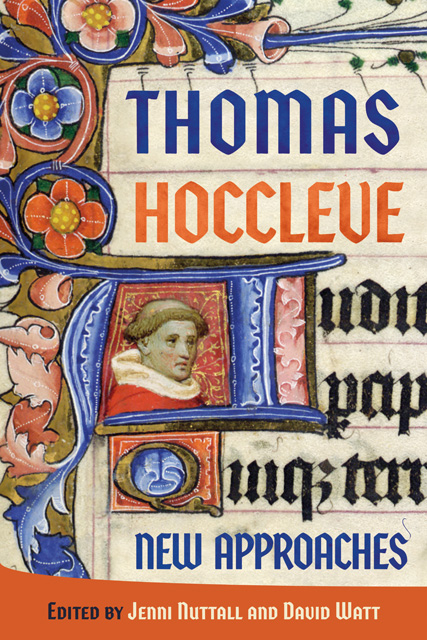3 - Hoccleve and the Logic of Incompleteness
Published online by Cambridge University Press: 11 January 2023
Summary
The focus of this essay is the formal organising principle of Thomas Hoccleve’s Series. By ‘formal organising principle’ I refer to the means by which the work organises itself, how it imagines its parameters – the way in which it begins and the possibilities with which it may end – and the logic that governs the work as it proceeds. This concept has been discussed, simply, as a work of art’s ‘organisation’. For instance, F. R. Leavis diagnoses T. S. Eliot’s difficulty in creating a poem – The Waste Land – based on a modern ‘mode of consciousness’ as stemming from such consciousness’s ‘lack of organising principle, the absence of any inherent direction’, causing Eliot to turn to mythological imagery to provide his poem with such an ‘organising principle’. The assumption is that a work of art should have an ‘organising principle’ that shapes the work of art in an ‘inherent direction’ even when the mind that produces it or that the work of art imitates does not.
As something that shapes the artwork, the formal organising principle has sometimes gone under the name of the work’s ‘structure’, as with Barbara Herrnstein Smith: ‘it will be useful to regard the structure of a poem as consisting of the principles by which it is generated or according to which one element follows another’. For her, structure can be ‘both formal and thematic’, but the name ‘structure’ is complicated by the fact that formal and thematic structures do not necessarily need to correspond. A ballade by Geoffrey Chaucer, like ‘Lak of Stedfastnesse’, has a formal structure of three rhyme royal stanzas with an envoy, and a thematic structure in which the speaker increases anxiety about the state of worldly affairs before, in the envoy, asking Richard II to set things right. To discuss that work’s formal organising principle, one would need to talk about the complex ways the formal and thematic structures interact. Recognising the formal organising principle of a work, then, is an important part of formalist criticism writ large. As Christopher Cannon reminds us, using a terminology derived from Chaucer, form ‘allows analysis to build a bridge between the immaterial and material: “form” is necessarily the “werk” seen in terms of the “thoughte” behind it, the brute physicality of some things as it is rooted in the realm of ideas conceived in some mind’.
- Type
- Chapter
- Information
- Thomas Hoccleve New Approaches , pp. 65 - 84Publisher: Boydell & BrewerPrint publication year: 2022

